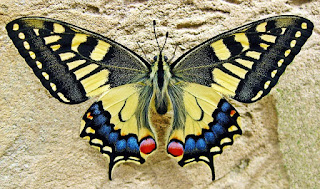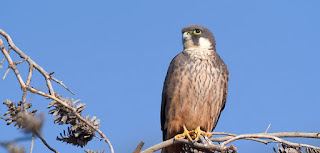British Butterflies conspicuous by their absence
 |
| Small Tortoiseshell (Photo: Public Domain) |
I have been in the UK since the end of August and have been sad to find that many once common British butterflies are conspicuous by their absence. It needs to be asked: where have all the British butterflies gone?
I remember a time when buddleia (Buddleia davidii) bushes were rightly also known as butterfly bushes, a time when you could count on seeing many species of butterfly feeding on the nectar provided by the colourful and perfumed flowering spikes. Those days, it seems, have long gone.
Peacock on Buddleia (Photo: Public Domain)
Butterfly species that feed on Buddleia
 |
| Small White on Buddleia (Photo: Public Domain) |
Red Admiral on Michaelmas Daisies (Photo: Public Domain)
At time of writing we are approaching the end of September, and despite the UK having had some very warm and sunny days, my butterfly sightings have been at an alltime low. Now you may be thinking, well, it is autumn, but the season shouldn’t matter. Hibernating butterfly species feed up in September and October too to help sustain them through the winter months ahead. The buddleias have mostly finished now but michaelmas daisies (Aster amellus) and orpine (Sedum telephium) are two commonly planted garden flowers that butterflies love, but this year the butterflies are missing.
It is not only flowers that butterflies will feed from. Red admirals, in particular, have a liking for rotting fruit and enjoy feeding in late summer and autumn on windfall fermenting apples and pears. There are plenty of apple and pear trees about but again a real shortage of butterflies.
Reasons for the butterfly decline
The disappearance of so many British butterflies is a very worrying issue, not just because of the great beauty of these winged insects that we all enjoy seeing, but because it shows that all is not well in the environment. If butterflies are vanishing this will have an adverse effect on other creatures that feed on them. Many birds eat caterpillars, for example, so their numbers are affected by a shortage of food.
Many reasons have been put forward for the serious decline in many species of British butterfly, ranging from pesticides and herbicides, pollution, disease, parasites and Climate Change. A change in farming practices is another reason so many species are thought to be dwindling in numbers.
Comma on Buddleia (Photo: Public Domain)
Red admiral, small tortoiseshell, peacock and comma butterfly caterpillars all feed on stinging nettles (Urtica dioica) and there is no shortage of this plant, although I have seen it deliberately destroyed by herbicide.
The decline of the small tortoiseshell has been a real mystery, and a warm winter followed by a chilly spring, is thought to have done a lot of harm to this pretty species.
2016 has been recognised by scientists monitoring the situation as a very bad year for butterflies, and it can only be hoped that next year is a lot better. How many butterflies have you seen this year?





















